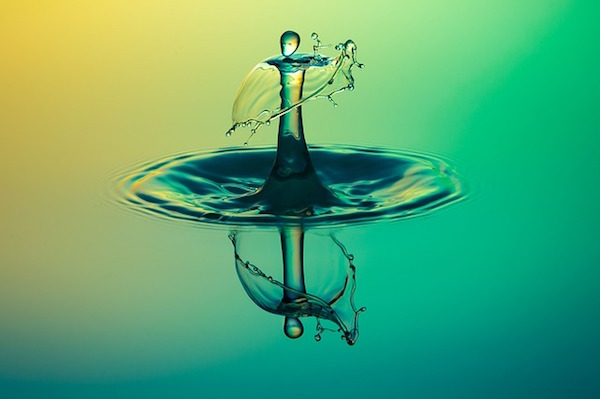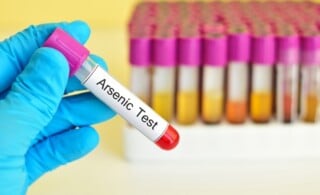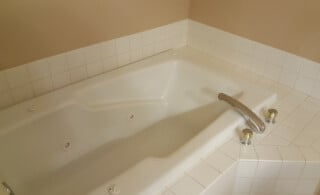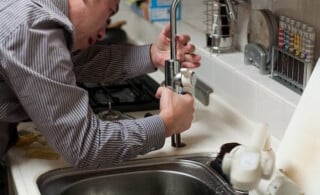
If you are concerned about the quality of your drinking water, filters are a viable and affordable option that will give you bottle-quality water straight from the tap. However, as home water purification systems are available in a wide variety of set-ups, knowing the best one for your home can be difficult.
While top-of-the-line drinking water filters are unbeatable in performance, the other options can be very enticing to those on a budget. Here are a few tips on distinguishing one home water purification system from the next, and some advice on which set-up will work best in your home.
Do You Have Safe Drinking Water? Test It to Be Sure
Many homeowners have questions about the safety and content of the water that comes out of their kitchen faucet, and for good reason. Mine tailings, agricultural runoff, livestock waste, sewage, and industrial wastes are just a few of the possible sources that can quickly pollute an entire water supply.
If you live in an urban or suburban area, the EPA requires that every municipal water district print out an annual CCR (Consumer Confidence Report) that provides you with information regarding the levels of chemicals, bacterial contaminants, heavy metals, and other pollutants that exist in your municipal water supply.
If you live in a rural area, or want to double check your CCR, you can have your water tested by private testing labs, county and state health laboratories, and departments of health. In fact, many independent organizations suggest that you test your water annually just to be safe, even if it’s tested safe in the past.
Cheap Drinking Water Filters
While cheap drinking water filters are available at nearly every department store, when compared to more complex home water purification systems, the former often comes up short. Many of the more affordable drinking water filters on the market require you to attach something to your existing kitchen faucet and flip the device whenever you want good quality water.
In some cases, homeowners find that the seal between the faucet and the water filter deteriorates quickly or isn’t tight from the beginning; in many other instances, replacing filter components isn’t done frequently enough and the water you end up with is about the same quality as it would have been straight from the faucet.
Since these contraptions are not always the most durable or convenient options, many have found that a slightly larger initial investment in a more permanent drinking water filter is the secret to water quality success!
Under-Sink Drinking Water Filters
Installing water purification systems underneath the sink are the next rung on the water filtration ladder. These units typically function extremely well and produce very high quality water, and they require very little attention to maintain. Though they are certainly more pricey that buying a filtering pitcher to keep in the fridge or installing a slip-on faucet filter, the convenience and performance of these drinking water filters is, in many opinions, worth the higher cost.
Since municipal water is tested regularly for the most common, harmful contaminants (though they don’t test for taste or contaminants in your water that aren’t deemed harmful), under-sink drinking water filters are probably as complex a system as any city-dweller will need. However, when the water you bathe in, brush your teeth with, and wash your clothes in comes from a well, there’s a good chance that an even more comprehensive home water purification system is necessary.
Point-of-Entry Home Water Purification Systems
Point-of-entry purification systems are installed where the water enters your home and filters all water entering the house. These systems typically deal with the actual health of your drinking, washing, and cooking water. Well water that enters your home isn’t altered unless you alter it, and while some wells are perfectly contaminant-free, many others provide water that must be filtered and purified not just to taste good, but to be safe for you as well as your plumbing!
Installing a home point-of-entry water purification system and getting your well tested regularly will ensure that your family isn’t at risk due to harmful contaminants, and your plumbing isn’t being exposed to mineral deposits that can cause poor function and premature aging.
Ready to start your water treatment system?
Find ProsMethods Used in Drinking Water Filters
Water treatment systems cost vary since they come in different forms and functions. These are the most common methods used in water filtration:
- Carbon Filters: The most common of all water purification systems, carbon filters are the ones that attach directly to an individual faucet or are included in filtering pitchers. The carbon cartridge inside the filter instantly removes organic compounds when water is in contact with it. They’re very affordable ($30-100), but the cartridge will have to be replaced periodically. Available in both granulated and solid block varieties, they are effective at removing foul tastes and odors from water, as well as fuel products and pesticides. If you have problems with lead, VOC’s, asbestos, cysts, and coliforms, there are specially made, certified carbon filters that can help.
- UV and Reverse Osmosis: These two methods use a high-tech form of ultra-violet light or membrane filters to remove all harmful minerals in the water supply. These can treat as well as condition your water and are often the methods used in under-sink water filtration systems. Expect basic systems to run in the hundreds of dollars and the most complex systems to be in the low thousands. Reverse osmosis is the type of filtration used by many bottled water companies because it does such a thorough job and is one of few filters that is effective at removing metals and nitrates from your water.
- Water Softeners: Hard water is caused by increased levels of calcium and magnesium in the supply. Hard water can cause scaling in water heaters, ruin the life of appliances, and hinder everyday routines (washing dishes, showering, laundering, etc.), as well as smell and taste bad. A water softener passes the hard water through an ion-exchange bed and turns the calcium into sodium, which in turn softens your water for more effective use. Water softeners are a necessary part of point-of-entry water purification systems for many well users.
Safe drinking water is a vital aspect of good health, making poor water quality a serious problem. If you suspect your water isn’t safe to drink, or have already tested it and found water quality to be a problem, talk to a specialist in water purification systems about choosing and installing the right system to make your water safe again.
 The Importance of Clean Water
The Importance of Clean Water  What Do I Do if My Drinking Water Has Arsenic?
What Do I Do if My Drinking Water Has Arsenic?  Drinking Water Safety Guide to Use During & After a Flood
Drinking Water Safety Guide to Use During & After a Flood  How to Find & Repair a Bathtub Leak
How to Find & Repair a Bathtub Leak  How to Hire a Qualified, Reasonable & Reliable Plumber
How to Hire a Qualified, Reasonable & Reliable Plumber 

Bought a house 2-3 years ago, and noticed some mildew on walls in bathroom and hallway. Cleaned it myself with products recommended at Home Depot. Not a good idea. Once the mold is disturbed thin it becomes active, the best way to describe. Therefore, it was then harmful to me because it was in the air.